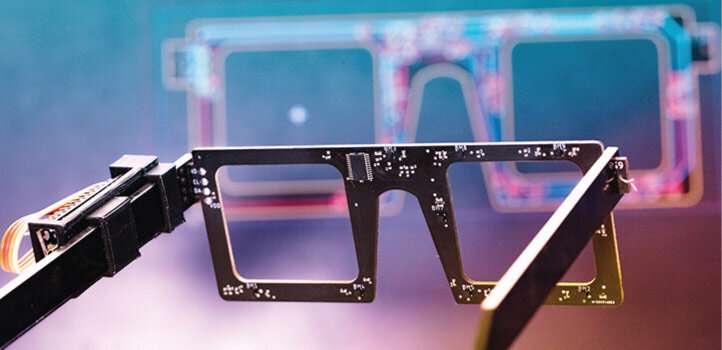
A system that uses flexible, breathable magnetic skin allows people with severe quadriplegia to move around and choose their surroundings. Developed by KAUST researchers, the high-tech system relies on the user’s facial expressions to accomplish a wide variety of tasks, from moving down the street to using an elevator.
There are a wide variety of assistive technologies for people with quadriplegia, but most systems are not suitable for patients with severe quadriplegia as they often rely on head or neck movements to work. For these patients, the options are limited to camera, tongue control, voice-assistant and neural detector systems. But these either offer a limited range of gestures or are not compatible with outdoor applications. Some also require invasive attachments or continuous attention while using the system.
“Most existing technologies don’t give people a lot of freedom,” says Abdullah Almansouri, a Ph.D. student in KAUST. “We wanted to develop a solution that works inside the house as well as outdoors, allowing them to move around independently.”
The new integrated system includes magnetic skins, smart glasses, a smart wheelchair and smart gadgets that rely on wireless Bluetooth and infrared communication.
The three magnetic skins are placed between the eyebrows and on each side of the nose to track facial movements, such as moving the eyebrows up and down and the nose left and right. These movements are detected by magnetic field sensors in the smart glasses and are converted into electrical signals that are transmitted to the head unit of the wheelchair.
This unit processes these signals into wheelchair or smart gadget commands, such as turning the lights on or clicking the mouse on a computer. The system currently supports 13 distinct facial gestures.
“We were aiming for something easy and accessible but also that couldn’t be easily triggered by accident,” says Almansouri. “The system itself handles the complexity, so the user is only wearing the glasses and magnetic skin to control their surroundings.”
With his team, Almansouri tested the system on three able-bodied users with a high success rate. The participants took less than 15 minutes to learn how to use the system without assistance, with a worst-case success rate of 93 percent.
Source: Read Full Article
